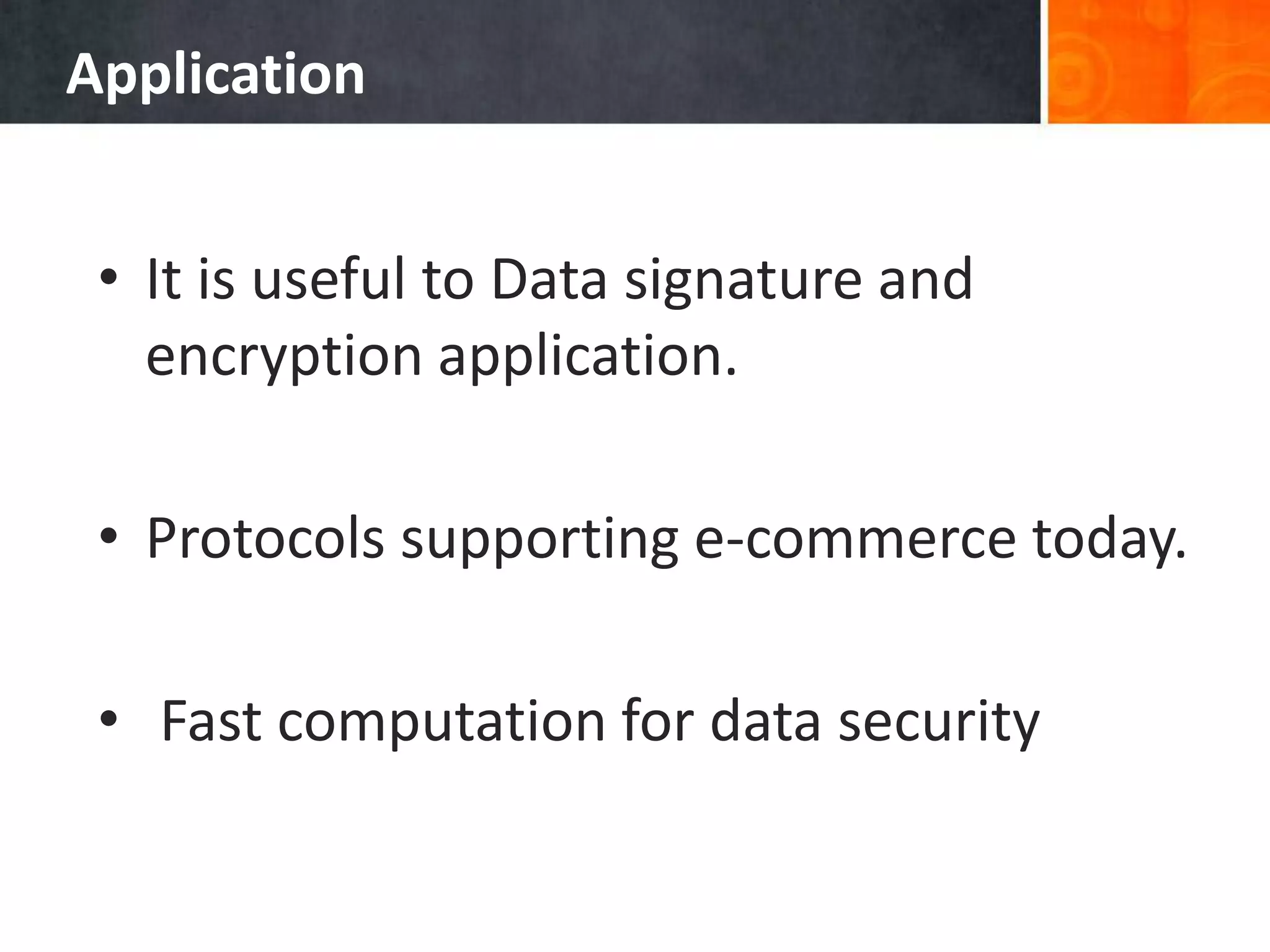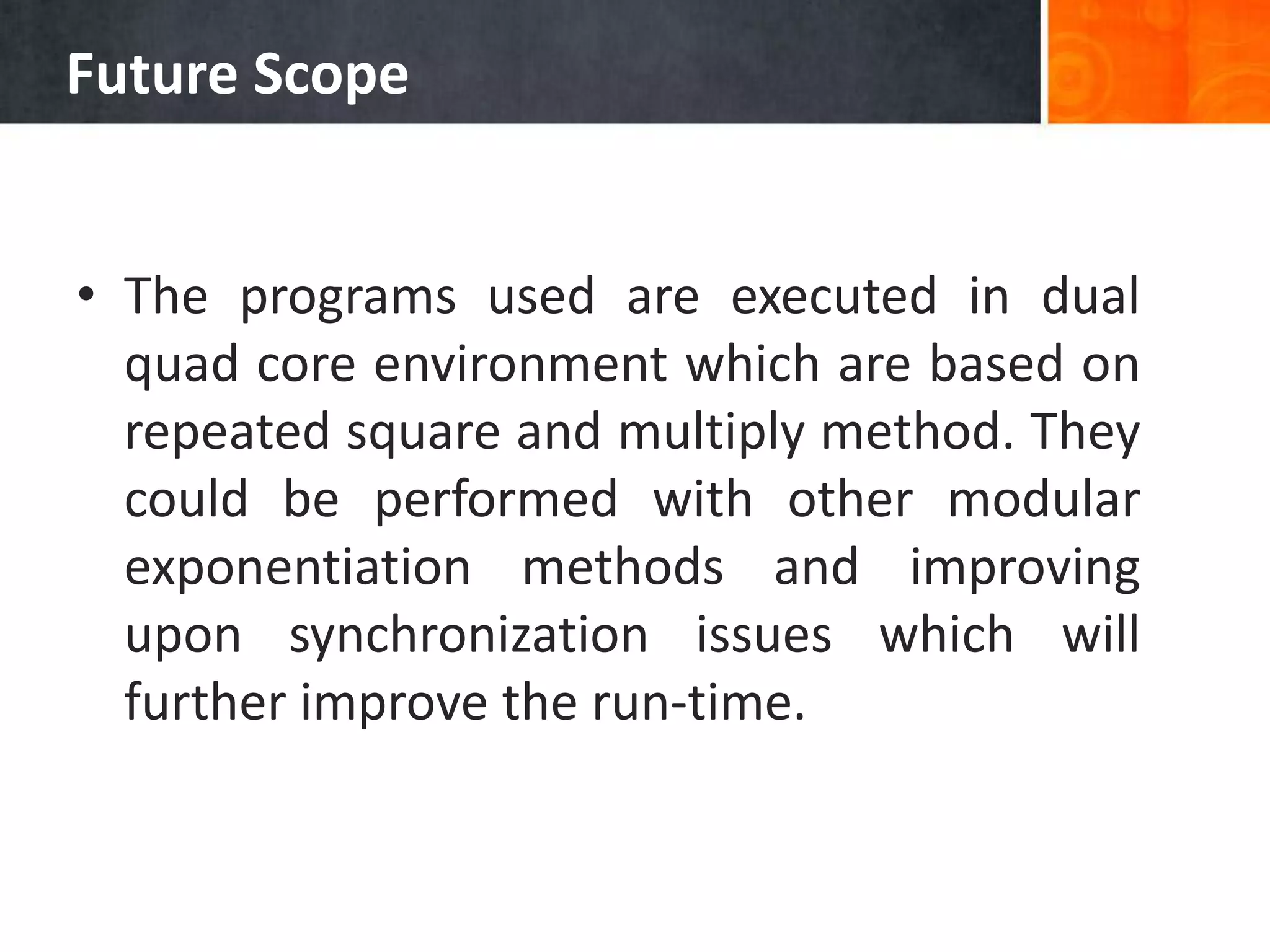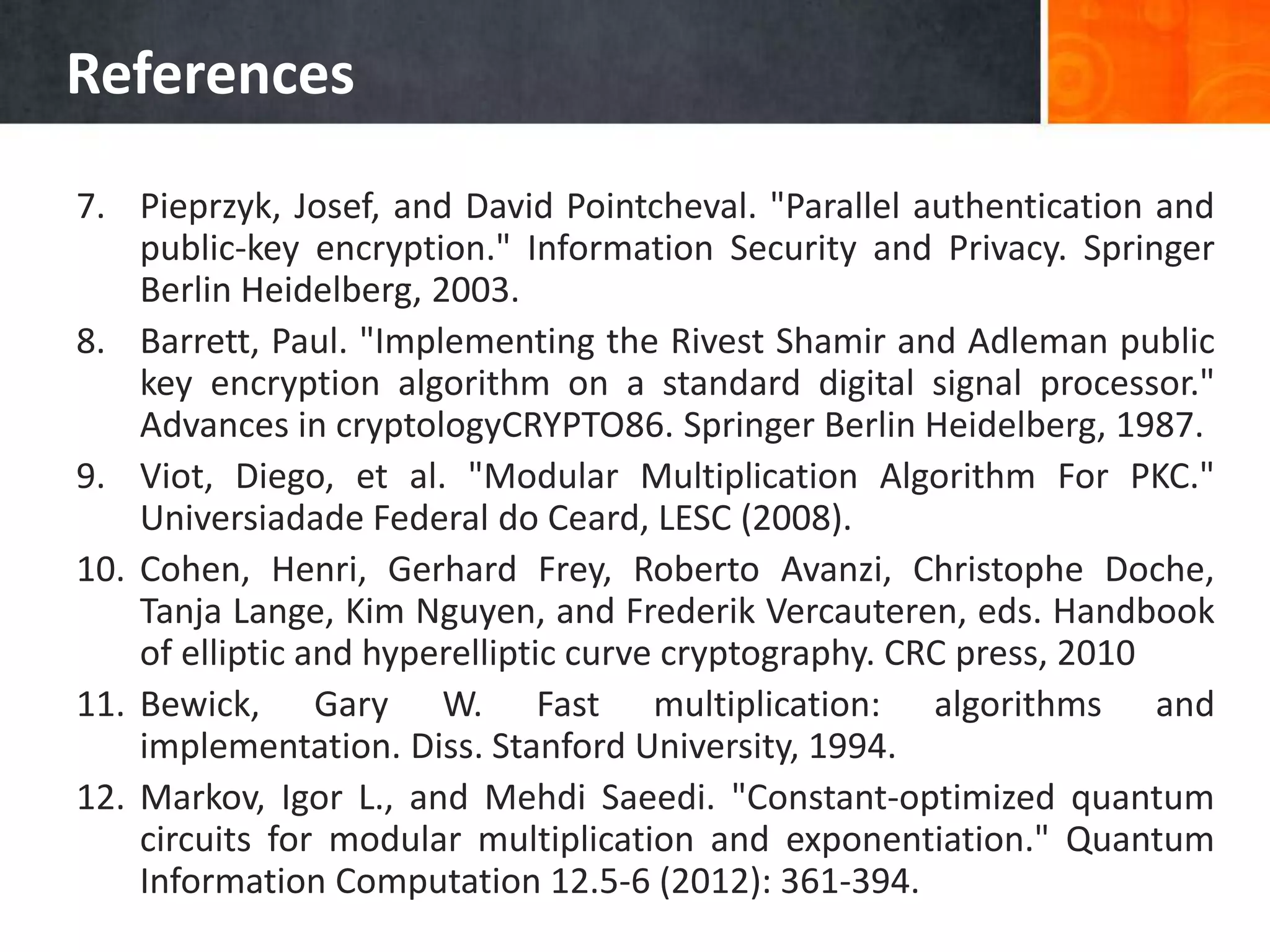The document presents a parallel algorithm for secure data communication using RSA public key cryptography, addressing the increasing demand for efficient routing in wireless networks. It outlines the advantages of parallel RSA over traditional methods, such as faster computation and improved resource utilization on multi-core systems. Additionally, it discusses potential applications, limitations, and future enhancements to the algorithm.

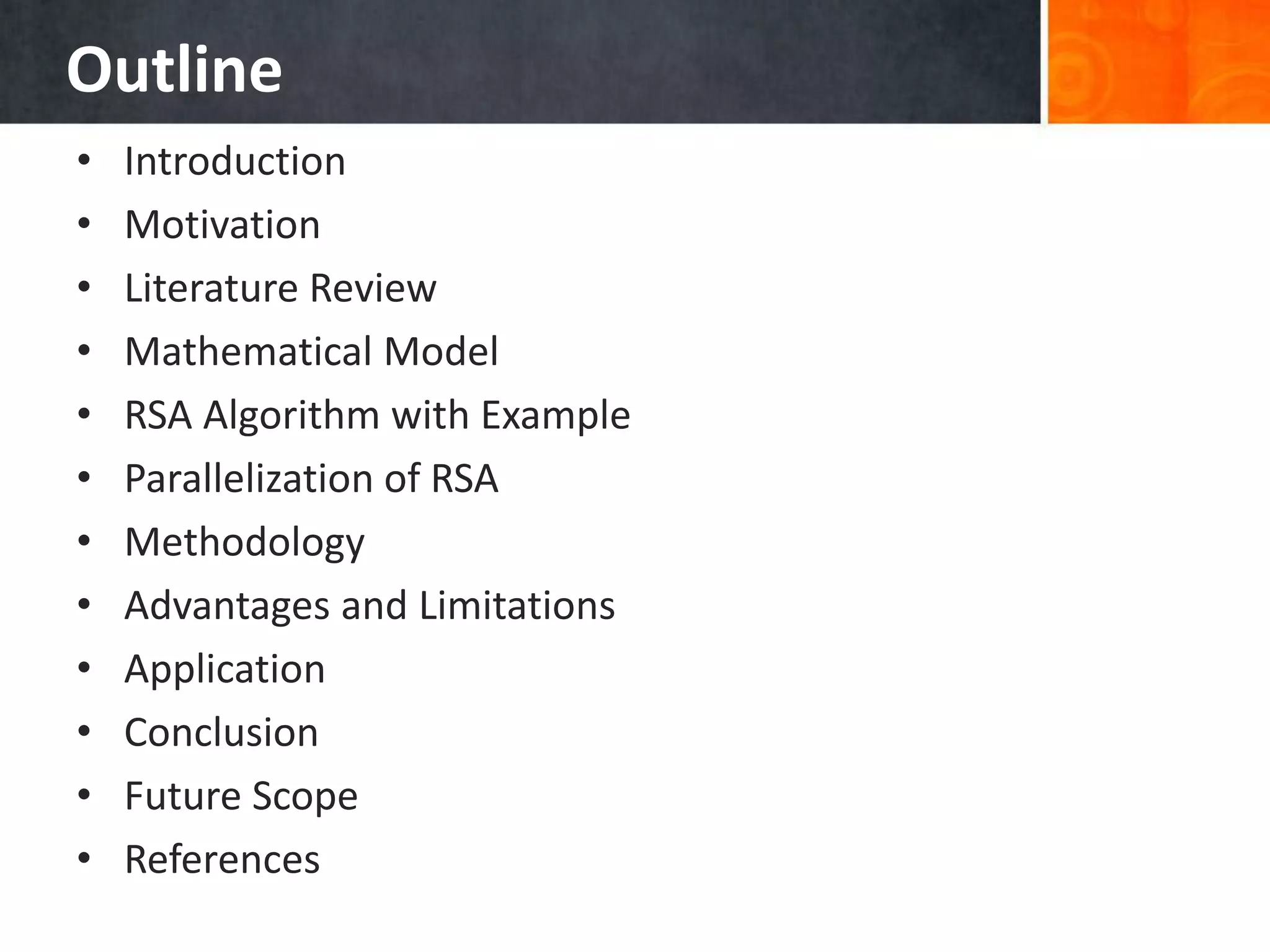
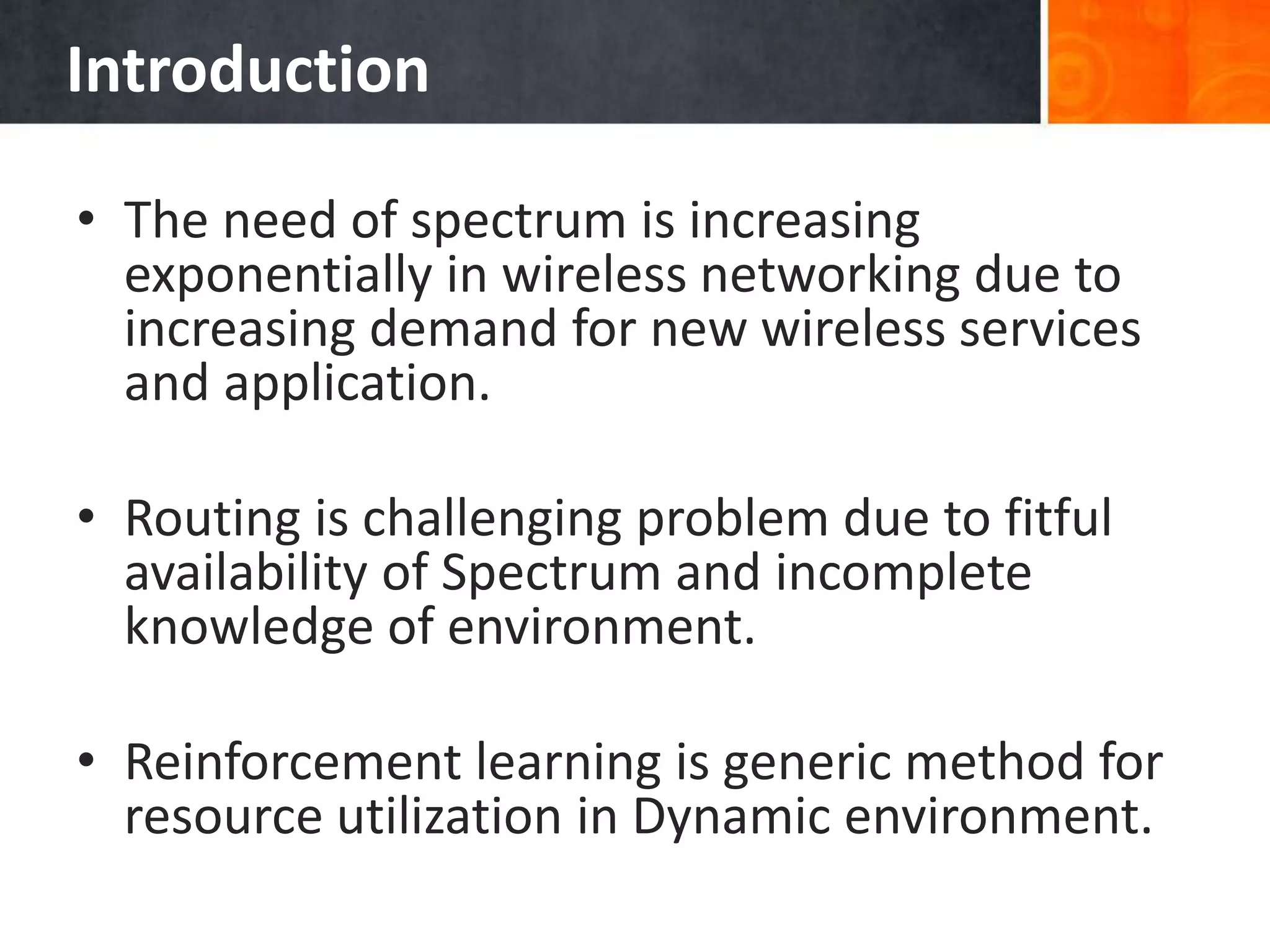
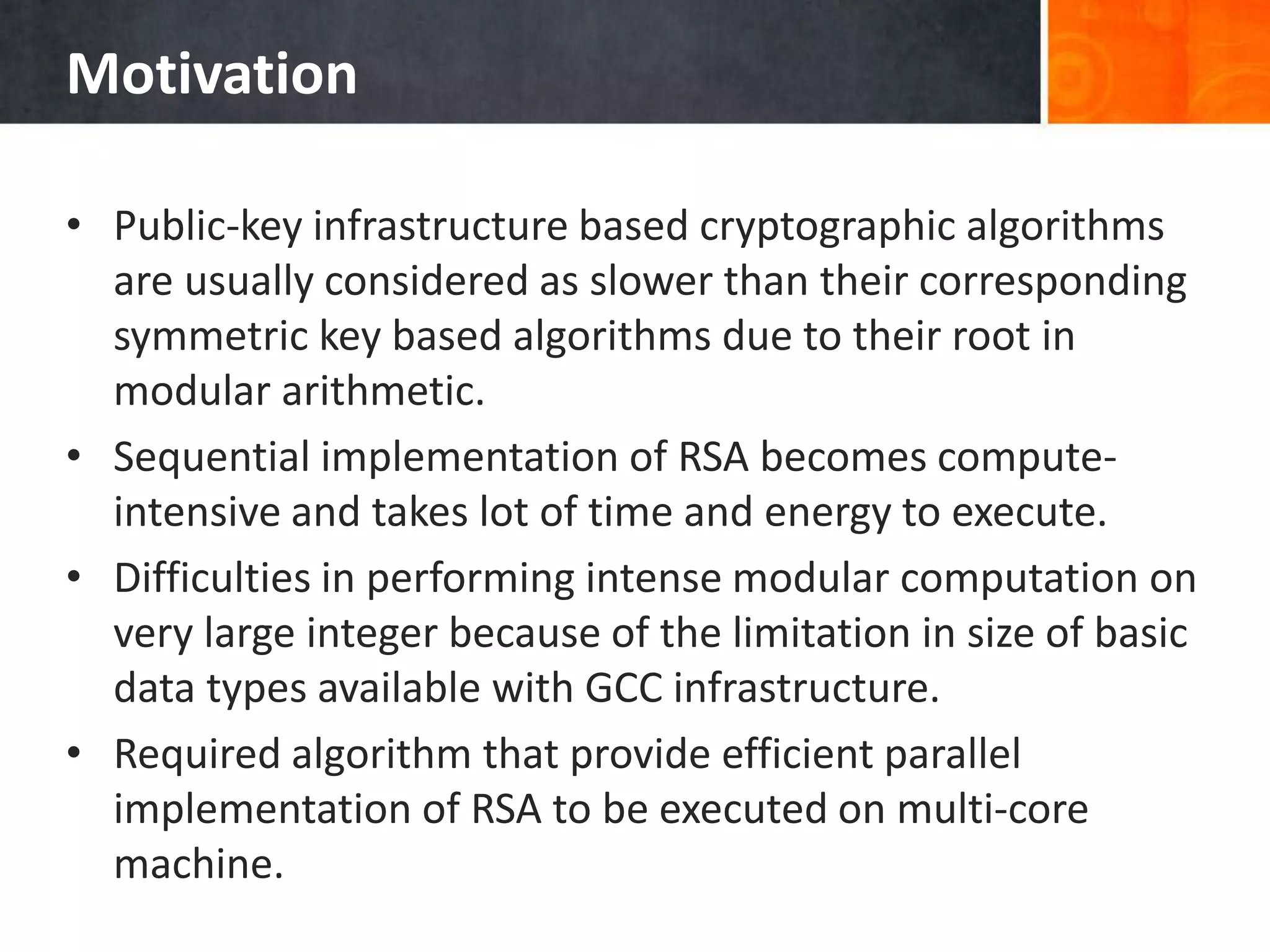




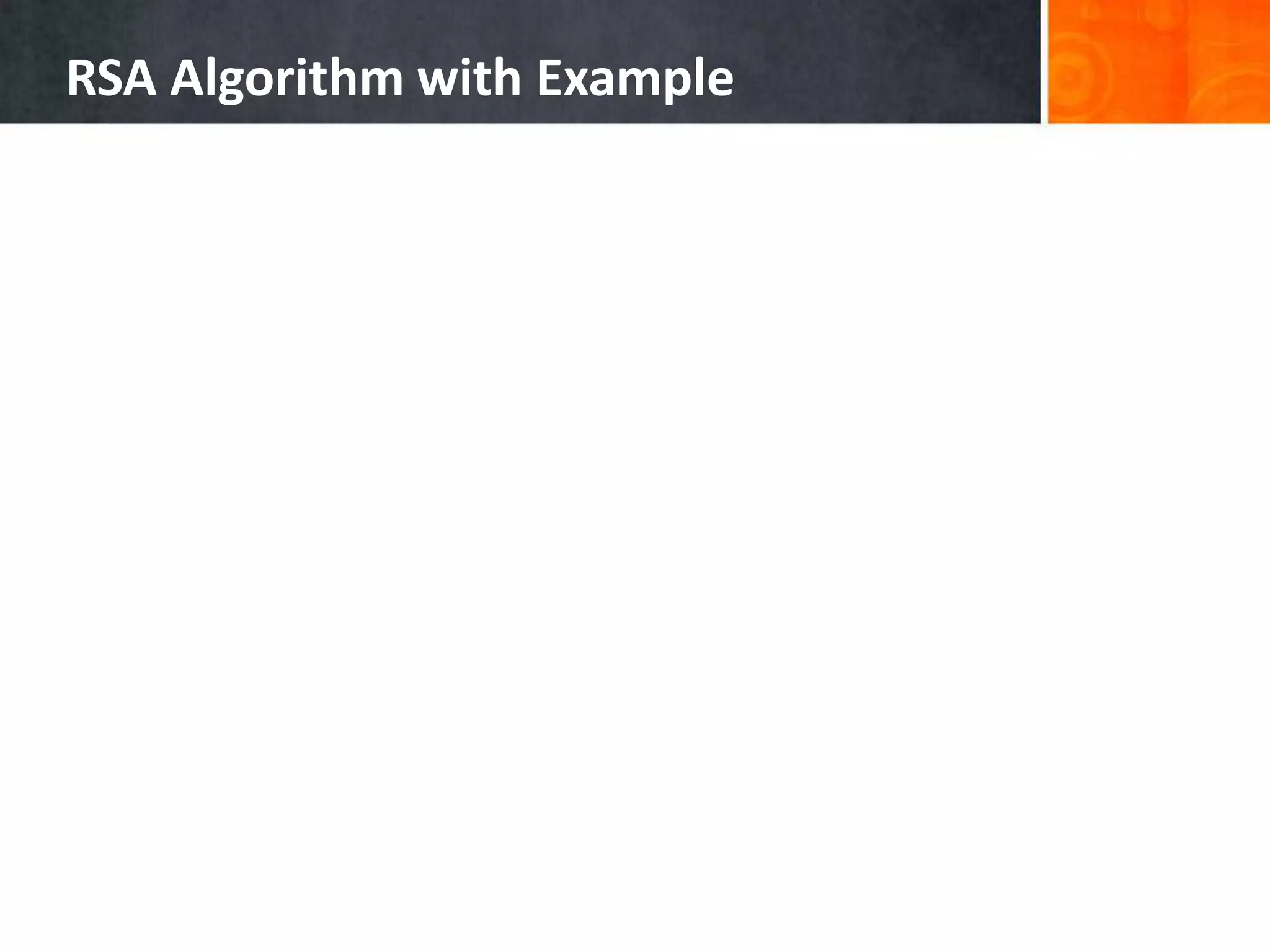

![Methodology • Temporal Difference : TD(0) procedural form Initialize V(s) arbitrarily, π to the policy to be evaluated Repeat (for each episode): Initialize s Repeat (for each step of episode): a← action given by π for s Take action a; observe reward, r and next state, 𝒔′ 𝑉 𝑠 ← 𝑉 𝑠 + 𝛼[𝑟 + 𝛾𝑉 𝑠′ − 𝑉(𝑠)] s ← 𝑠′ Until s is terminal](https://image.slidesharecdn.com/efficientpaprallealgorithm-170903095752/75/An-Efficient-Parallel-Algorithm-for-Secured-Data-Communication-Using-RSA-Public-Key-Cryptography-Method-11-2048.jpg)

